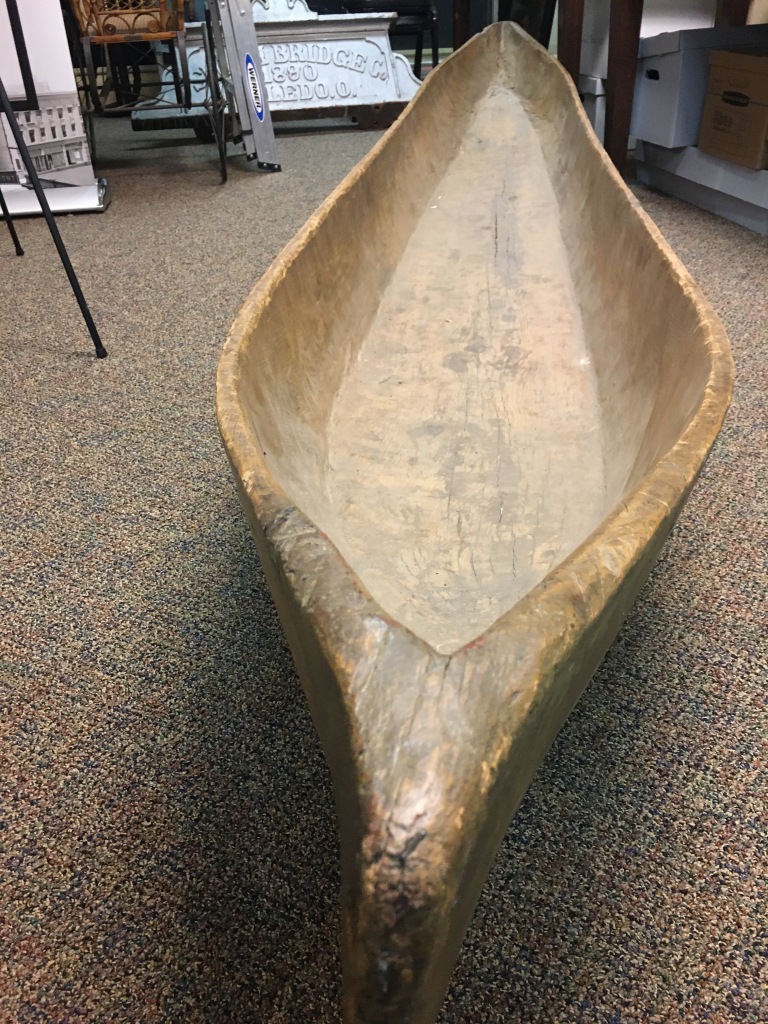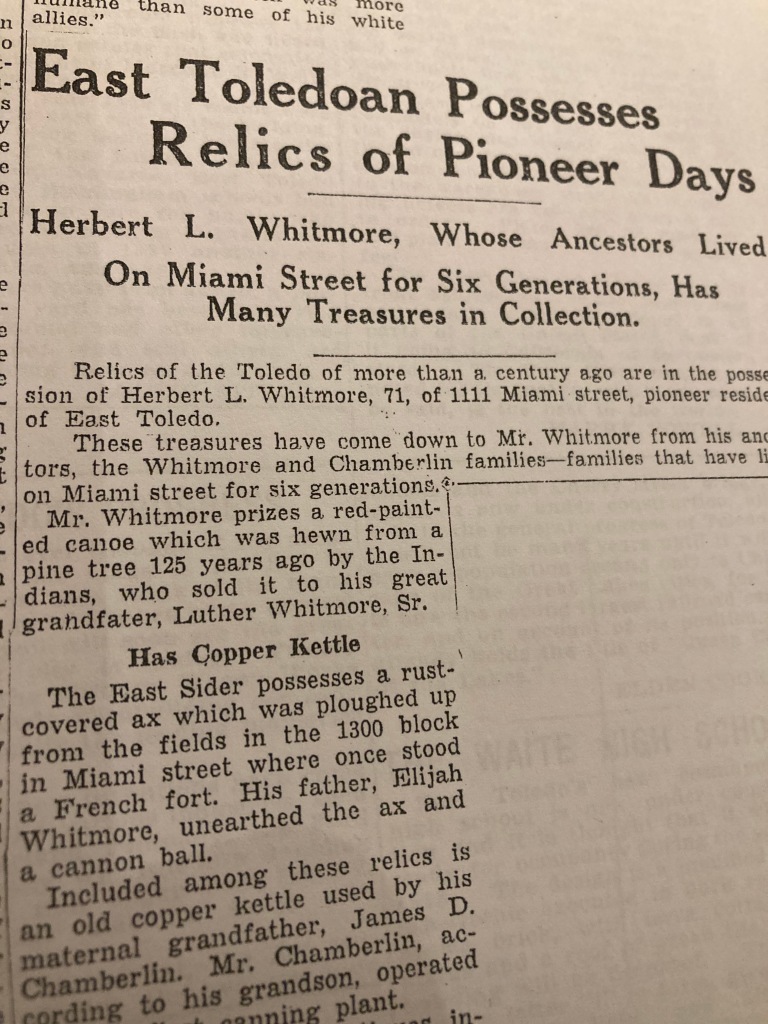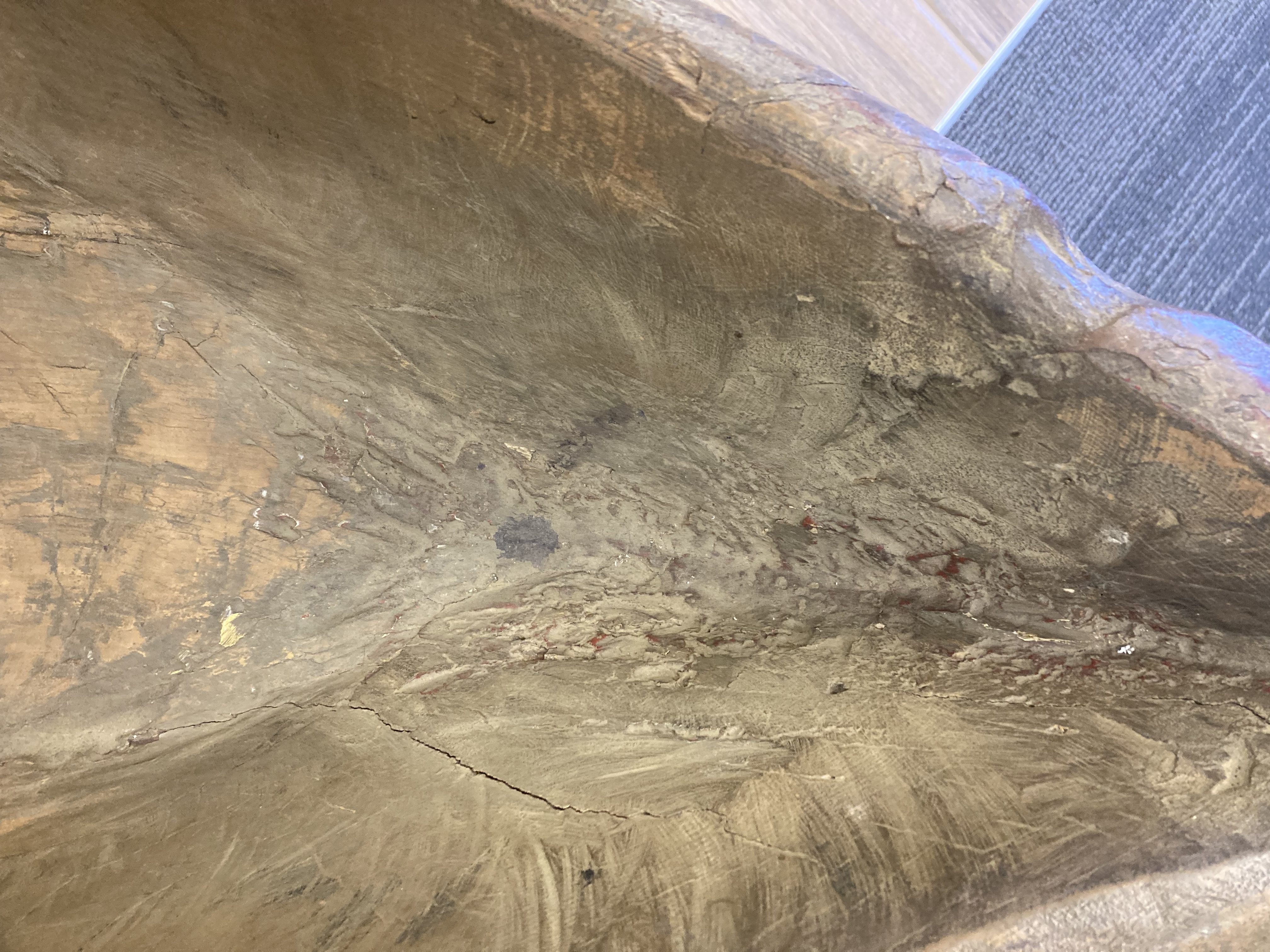A few years ago, the Toledo History Museum acquired a canoe. Not just any canoe, but a very old dugout canoe that is presumably of Native American origin. But to date, that simple fact has not yet been confirmed, nor do we know its age, or if it was hewn from a tree and shaped by Native Americans. If so, who were they and to what tribe did they belong? These are the essential questions that remain unanswered.

However, what we do know is enough to trace its origins to one of Toledo’s first pioneer families, and if the family stories are true, then this humble canoe may well be the oldest human-made watercraft in Northwest Ohio and a significant artifact in the broader history of the Great Lakes region.

The canoe is 17 feet long and appears to be very old and hewn from a single tree trunk. It found its way to the History Museum from the Toledo Zoo where it had been since the mid 1960’s. It was given to the zoo by a Ron Goodyear of East Toledo, a direct descendant of the Luther Whitmore family. Goodyear had told the Toledo Zoo, upon giving it to them for display, that the canoe had been given to Luther Whitmore as a gift from area Indians who considered the Whitmores to be friends. The time frame for this would have been around 1830, as the Whitmores had emigrated to the eastern side of the Maumee River from Connecticut sometime in the late 1820’s. They and other families, such as the Prentices, the Cranes, the Gardner’s and Fassett’s primarily found hospitable land for farming along the east bank of the river near what is now Fassett Street, southward to the area near the current casino or I-75 Disalle bridge.
The native tribes of Chippewa, Ottawa and Wyandot, were also active in the area and friendly to these early white settlers. They had numerous interactions, and many of the younger pioneer men became conversant in their languages in order to establish trade. It was written in Whitmore family lore that Luther Whitmore purchased the dugout canoe from the native Indians and later passed the canoe to his son Luther Junior. Another version of the story says that Luther Whitmore Jr. had become a a government agent and was responsible for distributing the regular annuities to the local tribes which they acquired in the various treaties that had been signed. Thus he became well known among the local tribes and he was given the canoe as a gift.
The first written mention of the canoe we have found thus far in our research was from two article from 1937, that appeared in Toledo Blade and Toledo Times. Both were penned by George Pearson, the long time Blade writer for East Toledo. In this article, he interviews, Herbert L. Whitmore who was still living along the east side of the River in the 1100 block of Miami Street, not far from the original Whitmore homestead. His father was Elijah Whitmore, who was the son of Luther Junior. Pearson writes that the Whitmore home is filled with many artifacts and relics from the early days of area’s settlement, including those of French origin(from the first French explorers) to native American axes, and arrow heads, and of course, the prized dugout canoe.
It is noted in the article that the canoe was painted red. No mention given as to who might have painted it. Was that done by the Indians, or later by someone in the Whitmore family?

Fast Forward to 2023, and one can clearly see traces of red embedded in the deep grains of the wood, and curiously, on the bow of the canoe, is the word “Wagush” painted in red paint of some type. As the Zoo was told by family members in the 1960’s, the word “Wagush” meant “friend” in the Wyandot language and the Native Americans emblazoned it with the word for their friendship with Luther Whitmore. A quick check of the Wyandot language dictionary, however shows no such word in that language, but instead Wagush is a Chippewa or Ojibwe word , meaning “fox”.
So the mystery of the word “Wagush” remained unresolved. As does its actual age and origin. If this is indeed a true artifact hand hewn by the last generation of Native Americans in Lucas County, it would seem to the logic of untrained observer of the past to be of some important historic value to the area.

What do we need to discover its real story. Well, money is always a first start as the funding could get us the carbon 14 dating that needs to be done, along with a scientifically valid study of the structure itself and how it was made. From this, perhaps more information leading to the identity of those who created this canoe and when. My hope is that someday soon we can put together the resources to do the research needed to answer the many curiosities of the Whitmore Canoe.
The Toledo History Museum invites your input and comments.


